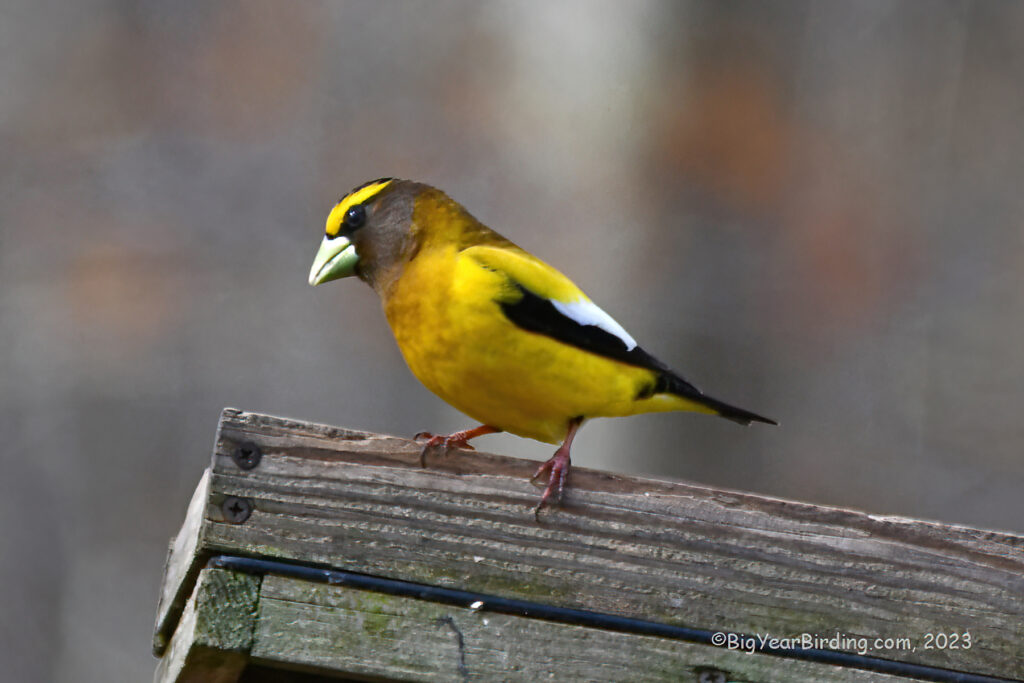
The Evening Grosbeak is a striking bird with a distinctive appearance and vocalizations. These birds are members of the finch family and are widespread throughout North America. They have a large, conical bill and a thick neck, giving them a heavyset appearance. Evening Grosbeaks are relatively large birds, with a length of 6.5 to 8 inches (16.5 to 20 cm) and a wingspan of 12 to 14 inches (30 to 36 cm). They are also quite heavy, with males weighing 1.9 to 2.5 ounces (54 to 71 g) and females weighing 1.5 to 2.1 ounces (42 to 60 g).
One of the most distinctive field marks of the Evening Grosbeak is their bright, bold plumage. Males have a bright yellow forehead, a black crown and bib, and a large white patch on their wings. The rest of their body is a vibrant yellow, with black and white markings on their wings and tail. Females are less brightly colored, with a grayish-brown head and back, yellow underparts, and a white patch on their wings. They also have black and white wing markings.

Evening Grosbeaks are resident birds in their breeding range, which spans from Alaska and northern Canada south to the northern United States. They are also occasional winter visitors to the southern United States, particularly during years when food sources are scarce in their breeding range. During breeding season, Evening Grosbeaks can be found in coniferous and mixed forests, where they feed on seeds, buds, and insects. In winter, they often gather in large flocks and visit backyard bird feeders for a reliable food source.

Despite their widespread distribution and large populations, Evening Grosbeaks are considered a conservation concern in some parts of their range due to declines in their populations. The reasons for these declines are not well understood, but habitat loss, climate change, and disease may all play a role. Citizen science projects, such as the Christmas Bird Count, help to monitor the population trends of this species and inform conservation efforts.

In summary, the Evening Grosbeak is a striking bird with bold plumage and a heavyset appearance. They are relatively large, with a length of 6.5 to 8 inches and a weight of 1.5 to 2.5 ounces. Their bright yellow forehead, black crown and bib, and large white patch on their wings are distinctive field marks. Evening Grosbeaks are resident birds in their breeding range, but also occasionally visit the southern United States in winter. Despite their large populations, conservation efforts are necessary to monitor and protect this species.

